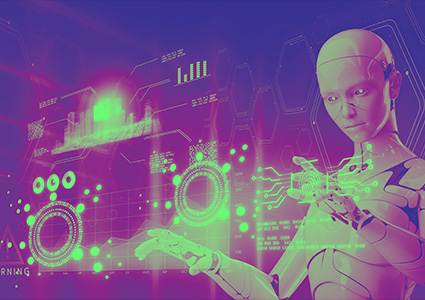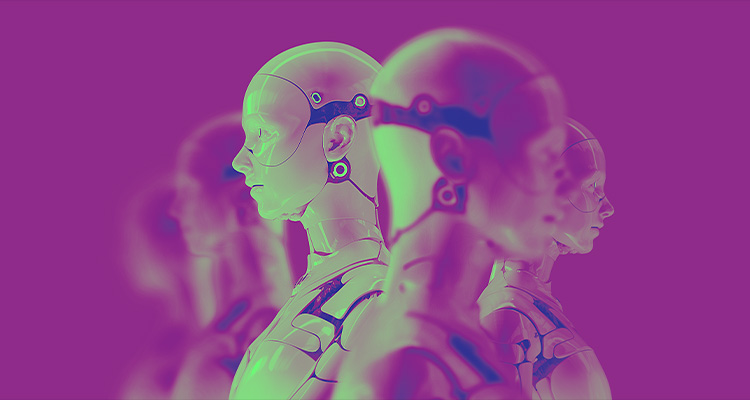Five ways manufacturers can balance future human-digital skills demands
Recent research found that knowledge workers’ critical thinking is weakened by using generative AI tools. Separately, a Harvard study suggested that AI tools boost individuals’ productivity but increase their isolation from colleagues.
These studies illustrate the complexity of the upskilling task facing manufacturing sector Learning and Development (L&D) managers. The complex scenarios add urgency to the fundamental question of how manufacturers can meet the balance of AI-driven and human skills required amid today’s unpredictable trading conditions, fast-changing working models, and pressure on skills budgets.
 The underlying context is that as manufacturing invests in more technology-intensive operations, individual companies will make greater use of multiple data sets, new workflows and multi-team collaborations, demanding higher-order human skills, to successfully collaborate and innovate. World Economic Forum research found that seven out of ten firms regard analytical thinking as an essential skill; many L&D teams find analytical reasoning the key subset for upskilling.
The underlying context is that as manufacturing invests in more technology-intensive operations, individual companies will make greater use of multiple data sets, new workflows and multi-team collaborations, demanding higher-order human skills, to successfully collaborate and innovate. World Economic Forum research found that seven out of ten firms regard analytical thinking as an essential skill; many L&D teams find analytical reasoning the key subset for upskilling.
In these conditions, achieving a balance of human and technical skills is essential to manufacturers to drive efficiencies, keep innovating and raise productivity. The World Economic Forum calculates that organizations investing in human capital alongside their technology capabilities can raise productivity by between four percent and 11 percent. Hemsley’s own study of US & UK learning professionals in 2024 found that employees developing ‘human skills’ was the key learning change they wanted.
As a result, learning teams will need to rapidly build their leaders and workforces’ ‘human or leadership’ skills for collaboration and connectedness – as well as ensuring that individual employees’ have the right blend of digital and technical skills for their changing role.
The data on training demand reflect this duality: in Make UK’s ‘Sustainable Workforce Survey 2024, the areas of highest demand were leadership and management (66 percent), higher order technical skills (58 percent), digital skills (37 percent) and data analytics (29 percent).
Hemsley manufacturing sector research found divisions over strategy and workforce barriers to upskilling. Regarding strategy, one in three (29 percent) manufacturers say they are rolling out an outcomes-focused strategy for skills and performance improvement, while one quarter (25 percent) want a skills-based approach. The same proportion (25 percent) is planning an employee performance strategy but hasn’t implemented it.
When it came to workforce-related barriers, one quarter of manufacturers highlighted low employee motivation as an obstacle and one sixth admitted they haven’t got a clear skills strategy. One in seven says market conditions are against them while the same proportion reckons their workforce is resistant to change/innovation.
Five ways to power upskilling
In these conditions, manufacturers will need a balance of five approaches to design learning strategies for such a unique task and ensure employees’ engagement with them.
First, L&D teams have to collaborate closely with company leaders to agree clear strategies for their workforces to acquire both human and digital skills. Learning professionals and company executives need plans that identify workforces’ skills needs, communicate priorities and determine whether new human and digital skills programs can be operated simultaneously – or as related programs if budget or bandwidth is challenging.
Second, L&D teams need dynamic and exciting learning strategies; approaches that harness the best of intelligent technologies like AI to customize learning in the flow of work and at scale. These approaches enable individual employees to ‘pull’ personal learning and performance support assets ‘just in time’ while benefitting from broader ‘push’ learning
Many employees are disengaged from content library learning platforms or weary of repeated workplace reorganizations and IT upgrades. As a result, skills strategies need to reignite people’s enjoyment of learning or convince the cynical that their employer is right behind them in upskilling endeavors and help build critical mass for new learning and training.
Third, L&D teams should persuade company leaders to become learning role models. Actions speak louder than words and leaders that demonstrably bring learning into their working hours will create ‘permission’ for managers and employees to adopt new learning techniques and ring-fence diary time for skills sessions.
learning into their working hours will create ‘permission’ for managers and employees to adopt new learning techniques and ring-fence diary time for skills sessions.
Fourth, company bosses must find the right balance between face-to-face and remote learning programs to optimize learning investment and boost outcomes. We have found renewed enthusiasm for face-to-face approaches in 2025 as people tire of too much digital or virtual learning.
Fifth, learning teams need to ensure their companies become more supportive learning organizations. L&D professionals can develop a ‘shared endeavor’ effect across their learning programs by encouraging informal support groups, in and out of work, or rooted in existing social media, or harnessing clever AI tools, to reinforce colleagues’ learning behaviors. This approach can also open external resources like professional networks and seminars to aid employees’ longer-term skills and career development.
Engineering change
UK manufacturers need creative learning options to inspire colleagues to acquire the blend of human and technical skills that AI demands. If learning teams communicate clear skills targets, harness smart new learning at work approaches, turn leaders into learning champions, make learning fun again and bring their people into supportive learning networks, they will successfully address the once-in-a-generation skills challenge from AI.
By Lynsey Whitmarsh
Lynsey Whitmarsh is CEO at Hemsley Fraser, a full-service learning and people development partner. It enables organizations to quickly activate change and realize their business goals through a mix of transformative learning content, a flexible technology platform, and a complete suite of services.
